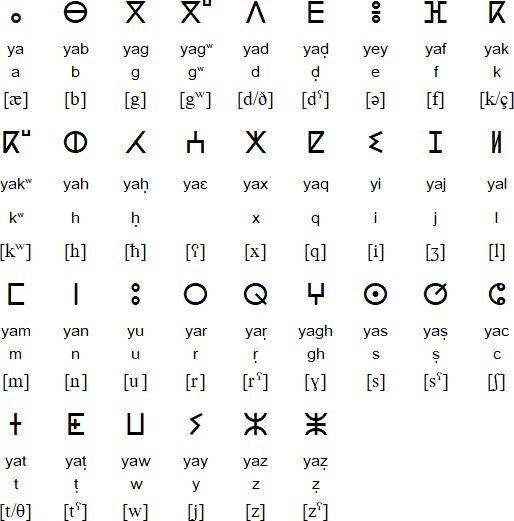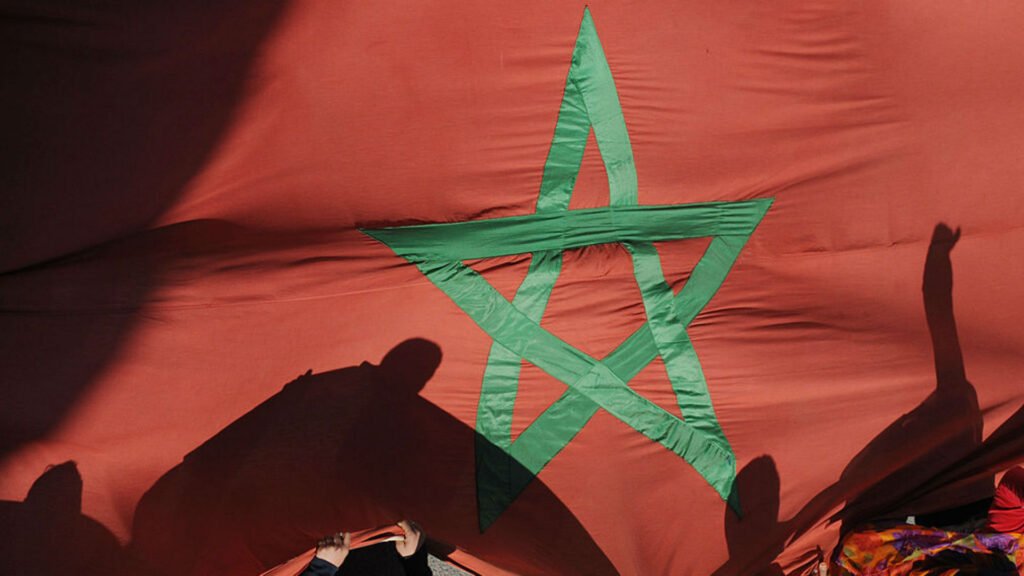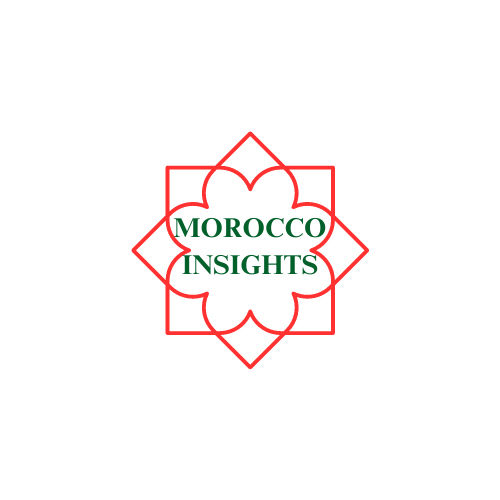Have you ever wondered how the Berber language is kept alive in the vibrant tapestry of Moroccan culture? It’s fascinating to discover the various intricate ways in which this ancient language is woven into the fabric of everyday life. From spoken conversations between friends and family to the mesmerizing melodies of traditional folk songs, the Berber language brings a unique charm and authenticity to the rich cultural heritage of Morocco. Let’s explore the captivating journey of how this language continues to thrive and endure, connecting generations and preserving a significant part of their identity.

This image is property of amazighworldnews.com.
Social Importance of the Berber Language
Strength of the Berber Language in Moroccan Society
The Berber language holds significant social importance in Moroccan society. It is estimated that around 40% of Moroccans speak Berber, making it a vital aspect of the country’s linguistic landscape. The strength of the Berber language lies in its ability to connect communities and preserve cultural heritage. It serves as a means of communication, creating a sense of belonging and identity among Berber speakers.
Use of the Berber Language in Everyday Life
In Moroccan society, the Berber language is used extensively in daily interactions, both in rural and urban areas. It plays a central role in family conversations, community gatherings, and local markets. Berber speakers often use the language to convey their emotions, tell stories, and express their unique cultural perspectives.
Promotion of the Berber Language in Education
Efforts to promote the Berber language in education have gained traction in recent years. Recognizing the importance of preserving linguistic diversity, the Moroccan government has made significant strides in incorporating Berber into the education system. Berber language classes are now offered in schools, allowing students to learn their native language and further strengthen their cultural identity.
Cultural Significance of the Berber Language
Language as a Carrier of Cultural Heritage
The Berber language serves as a carrier of cultural heritage. It encapsulates the traditions, customs, and values that have been passed down through generations. Through the Berber language, stories of ancestors, knowledge of traditional practices, and a deep connection to the land are preserved, enriching the cultural fabric of Moroccan society.
Berber Language in Traditional Arts
Traditional arts, such as textile weaving, pottery making, and music, are deeply intertwined with the Berber language. Many of the patterns, symbols, and lyrics in these art forms reflect the cultural narratives of Berber communities. The use of the Berber language in traditional arts helps to sustain and promote the language’s cultural significance.
Berber Language in Music and Literature
Music and literature play a crucial role in promoting and preserving the Berber language. Berber musicians and poets often use the language to express their thoughts, weave captivating stories, and create a sense of unity among Berber communities. Through music and literature, the Berber language continues to thrive and evolve, captivating the hearts and minds of both Berber speakers and enthusiasts.
Historical Factors Influencing Berber Language Preservation
Colonial Impact on the Berber Language
The colonial era had a significant impact on the Berber language. During this period, French became the dominant language of administration and education, leading to the marginalization of Berber dialects. Many Berber speakers faced societal pressure to abandon their native language and adopt French or Arabic. However, despite these challenges, Berber communities persevered in preserving their language through oral traditions and informal educational initiatives.
Berber Language Resistance and Revival
In the face of colonial domination, Berber communities displayed remarkable resilience and resistance. They actively fought against the marginalization of their language and culture, organizing grassroots movements and cultural events. These efforts led to a resurgence of pride in the Berber identity and ultimately played a pivotal role in the revival of the Berber language.
Efforts to Document and Standardize the Berber Language
To ensure the preservation of the Berber language, initiatives to document and standardize it have been undertaken. Linguists and researchers have worked tirelessly to develop written forms of Berber, creating dictionaries, grammars, and textbooks. Standardization has facilitated the teaching and learning of the Berber language, enhancing its status and promoting wider acceptance within Moroccan society.
Geographical Factors and Berber Language Preservation
Berber Language in Rural Communities
Rural communities in Morocco remain strongholds of the Berber language. In these areas, the language is deeply ingrained in daily life, with community members using it as their primary means of communication. The geographical isolation and close-knit nature of rural communities have contributed to the preservation and continuance of the Berber language across generations.
Variations in Berber Dialects
Berber dialects exhibit remarkable diversity across different regions of Morocco. The variations in dialects can be attributed to historical, geographical, and sociolinguistic factors. Each dialect has its own unique characteristics, vocabulary, and pronunciation, reflecting the linguistic and cultural nuances of specific Berber communities. Despite these differences, there is a sense of mutual intelligibility, allowing Berber speakers from various regions to communicate effectively.
Urbanization and its Impact on the Berber Language
The process of urbanization has had a mixed impact on the preservation of the Berber language. In urban areas, the dominance of Arabic and French as languages of education and commerce has led to a gradual decline in daily use of the Berber language. However, urban Berber speakers continue to maintain a strong sense of cultural identity, finding innovative ways to preserve and promote their language through cultural events, social media, and community organizations.

This image is property of www.moroccoworldnews.com.
Religious Influence on the Berber Language
Islam and the Berber Language
The Berber language has coexisted with Islam in Morocco for centuries. While Arabic is the language of the Islamic faith, Berber speakers have integrated their language into their religious practices, preserving their cultural identity. Many Berber communities incorporate Berber phrases, prayers, and proverbs into their religious ceremonies, reflecting the deep spiritual connection between the Berber language and their religious beliefs.
Berber Language in Religious Rituals
Religious rituals among Berber communities often involve the use of the Berber language. These rituals include traditional ceremonies, pilgrimages, and festive celebrations. The Berber language plays a prominent role in these events, reinforcing the spiritual and cultural ties that exist within the community. Through religious rituals, the Berber language continues to be passed down to future generations and remains intertwined with the cultural fabric of Moroccan society.
Incorporation of Arabic Vocabulary in the Berber Language
Over time, the Berber language has incorporated Arabic vocabulary, reflecting the historical and cultural assimilation between Arab and Berber communities. This incorporation has further enriched the Berber language, allowing speakers to express themselves more precisely and fostering a sense of linguistic diversity. The inclusion of Arabic vocabulary in the Berber language has also facilitated communication between Berber and Arabic speakers in Morocco.
Official Recognition and Support for the Berber Language
Legal Status of the Berber Language
In 2011, the Moroccan government officially recognized the Berber language as one of the country’s official languages, alongside Arabic. The inclusion of the Berber language in the constitution marked a significant milestone in the recognition and promotion of linguistic diversity in Morocco. This recognition has paved the way for increased support and resources for the preservation and development of the Berber language.
Establishment of Berber Institutes and Associations
In response to the growing recognition of the Berber language, several institutes and associations have been established to promote its preservation. These organizations focus on language preservation, research, education, and cultural activities. They provide platforms for Berber speakers to come together, share knowledge, and actively contribute to the vitality of the Berber language.
Integration of Berber Language in Media and Communication
The Berber language is gradually finding its place in various forms of media and communication. Berber radio stations, television programs, and newspapers have emerged, helping to disseminate information and entertain audiences in the Berber language. These platforms contribute to the normalization of the Berber language in Moroccan society, raising awareness and fostering a sense of pride among Berber speakers.

This image is property of www.alksar.com.
Multilingualism and Language Policies in Morocco
Berber Language alongside Arabic and French
Morocco is a multilingual country, with Arabic and French being widely spoken alongside the Berber language. Arabic serves as the official language of administration, while French is prominent in education and business. The coexistence of multiple languages presents both opportunities and challenges in terms of language policies, as the government seeks to balance the needs of diverse linguistic communities.
Implementation of Language Policies
Moroccan language policies aim to promote multilingualism and ensure equitable access to education and public services. Efforts have been made to integrate the Berber language into the education system, provide bilingual signage, and offer language courses. These policies recognize the importance of preserving and valuing linguistic diversity, while also addressing the practical needs of a modern, multicultural society.
Challenges of Multilingualism in Moroccan Society
Multilingualism in Moroccan society presents certain challenges. Language proficiency varies among individuals, creating potential barriers to effective communication and access to opportunities. Additionally, the varying status of different languages can lead to inequalities in educational and employment opportunities. Addressing these challenges requires ongoing efforts to promote language equality, cultural understanding, and inclusive policies.
Digital Age and Berber Language Preservation
Role of Technology in Preserving the Berber Language
The digital age has provided innovative tools and platforms for preserving the Berber language. Mobile applications, online dictionaries, and language-learning platforms now offer resources for Berber learners and speakers. Technology has democratized access to language resources, making it easier for individuals to learn, practice, and preserve the Berber language regardless of their geographic location.
Digital Tools for Learning and Promoting Berber
Various digital tools and resources have been developed to facilitate the learning and promotion of the Berber language. Online language courses, interactive language apps, and virtual language communities have emerged, providing opportunities for Berber speakers to connect, learn, and actively participate in language revitalization efforts. These digital tools play a crucial role in preserving the Berber language in the digital age.
Online Communities and Language Activism
Online communities and social media platforms have become vital spaces for language activism and the promotion of the Berber language. Berber-speaking individuals and enthusiasts share resources, engage in language-related discussions, and celebrate their linguistic and cultural heritage. These online communities serve as platforms for language revitalization, inspiring a sense of community and encouraging linguistic pride among Berber speakers.

This image is property of www.alksar.com.
Generational Shifts and Language Transmission
Language Transmission from Elders to Youth
Language transmission from elders to the younger generations is crucial for the preservation of the Berber language. In Berber families and communities, elders play a central role in passing down language skills, cultural knowledge, and values. Through storytelling, conversations, and participation in traditional practices, the younger generation learns the Berber language and develops a sense of cultural identity rooted in their linguistic heritage.
Youth Engagement in Berber Language Revitalization
Youth engagement in Berber language revitalization efforts is of utmost importance. Many young Berber speakers are actively involved in cultural events, language workshops, and digital initiatives aimed at promoting the Berber language. Their enthusiasm, creativity, and technological skills are invaluable assets in ensuring the sustainability and vitality of the Berber language for future generations.
Challenges of Language Transmission to Future Generations
While there is a growing appreciation and interest in the Berber language among young people, challenges remain in transmitting the language to future generations. The rise of urbanization, globalization, and shifting societal dynamics pose threats to the intergenerational transmission of the Berber language. Efforts must be made to create supportive environments, provide educational opportunities, and foster a sense of cultural pride to ensure the continuity of the Berber language.
The Future of Berber Language Preservation
Sustainability of Efforts to Preserve the Berber Language
Preserving the Berber language requires sustained efforts and long-term commitment. It is crucial to continue supporting initiatives that promote linguistic diversity, cultural heritage, and language revitalization. Government support, community engagement, and international collaboration will play pivotal roles in ensuring the sustainability of efforts to preserve the Berber language for future generations.
Role of Education in Language Preservation
Education plays a key role in language preservation. By incorporating the Berber language into the education system, providing resources for teachers, and fostering a positive learning environment, the Berber language can be effectively transmitted to younger generations. Education also cultivates an understanding and appreciation of linguistic diversity, creating a society that values and supports the preservation of the Berber language.
Government Support and Public Awareness
Government support and public awareness are essential for the successful preservation of the Berber language. Continued recognition and implementation of language policies, funding for language initiatives, and support for cultural organizations are vital to sustaining Berber language preservation efforts. Increasing public awareness of the importance and value of linguistic diversity will ensure broader support and engagement in language revitalization endeavors across Moroccan society.
In conclusion, the Berber language holds significant social, cultural, and historical importance in Moroccan society. Efforts to preserve the Berber language are evident in various aspects of daily life, including education, arts, and religious practices. Historical, geographical, and religious factors have shaped the trajectory of the Berber language, while the digital age and generational shifts present both opportunities and challenges for its preservation. With sustained efforts, government support, and public awareness, the future of the Berber language in Moroccan culture can be secured, allowing future generations to inherit and celebrate this unique linguistic heritage.

This image is property of www.newarab.com.
